PRODUCER SPOTLIGHT: Arkansas Valley Organic Growers // Pueblo, COArkansas Valley Organic Growers is a farmer owned and operated cooperative. We are a group of local growers that work together to bring you the best, freshest produce and farm products every week. We only offer you what is at the peak of freshness and ripeness each week, bringing you a bounty of freshly harvested products as well as value added products from our region. We work with organic growers in the Arkansas Valley and throughout our region to guarantee all produce is grown to the highest standards, without the use of pesticides or other chemicals that aren’t Organic Materials Review Institute approved. This gives you confidence in the natural purity – and goodness! – of all our products. WEEK 6 // UPDATES + WHAT'S IN THE BOX?I hope you are all having a good summer with some outings, family time, and hopefully great cooking and super-healthy, bioregional eating! Back in Mosca headquarters it has been an interesting season, to say the least! We are super appreciative to have you on board and look forward to some new and exciting crops coming out of the fields. -- Nick C. Updates: - Ring a Ding Farms triple-washed organic baby greens were hit with hail and are in their second week of recovery. We hope they are back next week! - Peach season is upon us and we are including 5 lbs in this week’s box, and will include about this much, perhaps a touch less, in the upcoming weeks. If you want more peaches you can order cases out of the market. - Here’s a snapshot of this week’s box (items may change, be added, or deleted based off market and/or field conditions):
Gil Mota has been working on ranches and raising cattle since he was 13. For the past 20 years he has been raising grass fed beef in the San Luis Valley. Gil Mota believes in efficient ways to manage cattle on both ranch land pastures and high mountain pastures. He uses electric fencing and knows how to communicate with cattle to get them to go where he needs them. Gil believes in smart management and the conservation of grass and soil resources. The ground beef that was supplied in the CSA Beef Share was raised on high mountain pastures above Villa Grove and on pastures between Crestone and Moffat. ABOUT THE GMO-FREE EGGS IN THE CSA EGG SHARE: The Amish are a devout people with an identity, a purpose, and a great knack for farming. Ab Yoder and his family raise free range layer hens at scale and with quality in mind. They are fed a GMO-free ration including alfalfa, which gives the eggs the super dark yolk. We have had people far and wide notice the quality of these eggs and they are a Valley Roots top seller going all the way to Santa Fe and Denver markets. We are lucky to have such a producer in our community! For Colorado storage crops here’s some guideline for best quality preservation: Potatoes: Storage temp: 45-50 F Humidity 95-99% Keep in dark Storage 2-12 months (the White Mountain Russets were harvested last September) Radishes: Storage Temp: 32 F. Humidity 90-95% Topped storage 3-4 weeks, Black Radish 2-4 months Turnips: Storage Temp 32 F. Humidity 90-95% Storage 4-5 months RECIPESPeach and Wheatberry Salad (from CLEAN, by Terry Walters – thanks to Donna Mabry)
This salad is a snap to prepare and makes a great side dish or main dish for breakfast, lunch or dinner. Wheatberries can be hard to digest, so make sure to take the time to soak them first. For a change, substitute your favorite vinaigrette for the sesame oil and lime juice. To make this salad gluten-free, use wild rice instead of wheatberries. (newsletter note -- I'll bet Valley quinoa would be excellent!) 1 1/2 C wheatberries sea salt 4-5 scallions, chopped 1 C chopped peaches (can substitute apples in the fall!) 1/2 C currants 1/4 C toasted sunflower seeds juice of 1 lime 3 Tbsp toasted sesame oil (newsletter note - that's a lot. Tone it down with some Sunflower oil from Lamar, CO!) Rinse wheatberries, soak in bowl with enough water to cover for at least 1 hour, then drain. In large pot, bring 3 1/4 C water to boil. Add wheatberries and pinch of salt, reduce heat, cover, and simmer until all water is absorbed. Set aside to cool, then fluff with fork. In large bowl, combine cooked wheatberries with scallions, peaches, currants and toasted sunflower seeds. Toss with lime juice, toasted sesame oil and pinch of salt. Serve at room temperature or chilled. Preserving Peaches (adapted from Wara Cookbook by Yasuhiro and Kari Funakoshi – thanks to Megumi Sugihara) Most of the peach preserving techniques ask for lemon juice and sugar. This method below, however, uses only salt. Salt? You may ask. The fact is that salt not only prevents discoloring but brings out the natural sweetness of the peaches more. When the peaches are preserved this way, it seems to keep the flavor and the aroma better over time. #2 peaches are perfect for this though nothing is wrong with preserving #1 peaches if you can stop eating them all fresh. The peach preserved this way can be frozen or canned/jarred. One word about canning. Don’t get intimidated! Yes it takes time but it is not difficult and all worth it! Just follow the instructions that come with your canning pot or what you find online (for example http://extension.colostate.edu/topic-areas/nutrition-food-safety-health/canning-fruits-9-347/) step by step. For the peaches preserved this way, no need to add syrup. Simply used the “juice” that comes out of the peaches in the process of cooking. Remember we are at high altitude… usually the instruction tells you how much longer you’ll have to boil. And then, enjoy the peaches all year long! Use preserved peaches for making sherbet (blend with syrup and freeze), peach torte (replace cherries with peaches in the Cherry Torte recipe from week 3), peach pancake/waffle, jam, and or salad (for example, toss with boiled green beans and almost slices). Sky is the limit! 1) peel peaches and dice or wedge in1/8 2) sprinkle the bottom of ceramic coated or stainless pot lightly, place the peaches, and sprinkle with salt on top 3) cook on low to medium heat till the peaches are cooked (but not losing the shape) and the juice is out 4) let it cool
1 Comment
“Whether we and our politicians know it or not, Nature is party to all our deals and decisions, and she has more votes, a longer memory, and a sterner sense of justice than we do.” ― Wendell Berry PRODUCER SPOTLIGHT: Weathervane Farm // Buena Vista, COSeth and Caitlin Roberts seek to cultivate relationships with the land and community. They make it a priority to provide high quality farm products while working harmoniously with the environment. Seth and Caitlin each have over 15 years of experience managing gardens and uniting consumers with local food. All of our farming practices are rooted in developing a greater understanding of how we can best relate to the land and our community. We do not follow any particular methodology, yet borrow from several. We do not use cookie-cutter approaches, but instead seek solutions that make sense for the health of our specific farming circumstance. Our commitment to you is not to use any petrochemical fertilizers, pesticides or herbicides. It is our belief that healthy soil is required for healthy plants, free of pests and disease. We strive to understand and work in partnership with the organisms around us from the ground level of roots and soil up to trees and birds. The fertility of our soil is managed through the use of green manure crops, compost application, mineral additions, crop rotation, and cultivating our plantings with the use of the tractor or with hoe in hand. WEEK 5 // WHAT'S IN THE BOX?
RECIPES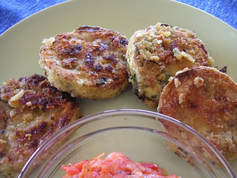 Calabacita Parmesan Calabacita is another “soul food" of the San Luis Valley. We can cook them in so many ways and they are oh, so yummy. For a new way to enjoy Calabacita, try Calabaciata Parmesan! 1) Slice the calabacita sideways, about 1/3 inches thick. 2) Grate parmesan cheese, chop parsley, and mix them in bread crumbs. 3) Dip calabacita slices in beaten egg, then coat them with bread crumbs. 4) Sear them in frying pan till soft inside and crisp on the outside. 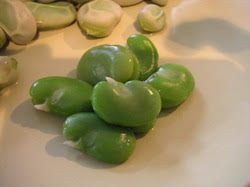 Fava Bean Paste Fava beans, a native of northern Africa, seem to be more common in European and Asian cuisines than that of Americas. It is great to make soup with and a good addition to salad, pasta, and many other dishes. It also makes a healthy snack when it is simply shelled and boiled in salt water. Here is a recipe for a paste that is flavorful and visibly appealing with bright green color. 1) Take off the outer shells and boil the beans in a big pot of water with good amount (approx 2-3 tablespoons) of salt 2) Take off the inner skin and mash the beans 3) Add some olive oil, fresh basil leaves, and grated garlic (Alternatively, blend cooked fava beans, olive oil, basil, and garlic in a blender) 4) Taste and season with salt and pepper. Add some lemon juice if you’d like. Adjust the thickness with olive oil and water. The paste is great on the toast/crackers, or as a dip for the veggie sticks. Garden party, anyone? 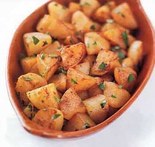 Glazed Turnips 2 lb small to medium (2-inch) turnips About 1 1/2 cups plus 3 tablespoons water 2 tablespoons butter or alternative 1 tablespoon sugar 1/2 teaspoon salt Garnish: chopped fresh flat-leaf parsley Peel turnips, then halve horizontally and quarter halves. Arrange turnips in 1 layer in a 12-inch heavy skillet and add enough water (about 1 1/2 cups) to reach halfway up turnips. Add butter, sugar, and salt and boil over moderately high heat, covered, stirring occasionally, 10 minutes. Boil turnips, uncovered, stirring, until tender and water has evaporated, about 8 minutes. Sauté turnips over moderately high heat, stirring, until golden brown,about 5 minutes more. Add 3 tablespoons water and stir to coat turnips with glaze. “We’re a team. Together we are building a new food system. Such a change requires a new way of thinking –– a new infrastructure to make our people and our land healthier. To impact our food system takes courage. To reshape its very foundation takes even more courage. You must believe in your voice and move us toward a future that most people don’t see.” Nicolas Jammet, letter to young farmer PRODUCER SPOTLIGHT: The Chip Peddler // Durango, CONeil Hannum // The Chip Peddler Durango Snack Werks, home of the Chip Peddler, was started on the first day of 2010 with the simple idea that great snacks don’t have to come from large factories and made with ingredients that you can’t pronounce. Here are some of our founding principles that we keep in mind during every decision we make: -Keep the dollars as local as possible -Use fair trade practices -Strive to implement environmentally responsible production policies -Give back to two wheeled sports. Our process starts by purchasing each ingredient from single origin sources. This allows us to build personal relationships with our independent producers, creating a direct connection between the people, the land and the chips we make. Every dollar spent on a local business goes to paying local taxes, hiring local employees & other ways of giving back which in essence help build a stronger community. Tortillas: We could buy our corn on the open market where it might have traveled thousands of miles across the globe to get here. However, we choose to buy ours from the Ute Mountain Ute, Farm & Ranch located in Southwestern Colorado. Each pallet of their Non-GMO white corn that we purchase has been labeled telling us where it was grown and what variety it is. Oil: Our chips are then cooked in oil that comes from Colorado Mills, located in Lamar, Colorado. They use only Non-GMO high oleic sunflower seeds providing a healthy cooking oil with zero transfats. Each batch is mechanically cold pressed to preserve the healthy antioxidants while never using any chemicals during the process. Salt: The salt we use comes from Redmond Trading Co., where they mine Real Salt® brand sea salt from a single source in Redmond, Utah. Millions of years ago an ancient sea covered and uncovered the area leaving a bed of unpolluted salt containing more than 60 trace minerals. Real Salt brand sea salt is unrefined and comes to you in its natural form, never bleached, kiln dried, heated or altered with chemicals, pollutants or additives. WEEK 4 // WHAT'S IN THE BOX?
RECIPES"Spanish settlers to the northern New Mexican region initially presented the Bolita Bean to North America. The bean was incorporated into much of the American Indian food traditions in the Four Corners region. With its high protein content and its general ease on the stomach, the Bolita Bean became an important crop, quickly becoming extensively cultivated throughout the American southwest. The beans are deep, pinkish-beige almost salmon in color and boast a taste richer in flavor than the Pinto bean, to which it is often compared.”
The Bolita Beans from SLV is of particular importance to our local food systems. Over the generations, farmers in SLV selected the beans that did well in this arid climate of high altitude and replanted again and again. As a result, we have very special beans that are not much available outside of the Valley. On a few occasions traveling in the US, I was asked by some people with family ties in SLV if we can still get THE BEANS. Obviously, Bolita is a soul food for the people with an ancestral connection to the SLV… it is our roots! Cooking Bolita Beans 1 - 1&1/2 cup dry beans 2 garlic cloves (finally chopped or crushed) 1 small onion chopped salt pepper 1/4 cup oil chili powder (optional) thyme (optional) oregano (optional) vinegar (optional) 1) Wash and soak the beans in water over night. 2) Boil the beans 2 times changing the water each time. 3) On the 3rd time around, add beans, hot water, chopped garlic, chopped onions, salt & pepper, vinegar, spices, and oil. 4) Cook until soft (with pressure cooker, it takes about 10 minutes.) 5) Taste and adjust the taste. It is very handy to have cooked beans in the refrigerator for quick quesadilla, burrito, or Huevos Rancheros. Radish-based Pico de Gallo Finely chop the radish and simply mix with cilantro, chopped tomatoes, onions, lime juice, salt and pepper Beet / Potato Roast 1) Peel and slice (or cut in half if the beets are small) 2) Coat with oil, season with salt 3) Roast on cookie sheet at 400ish for about 45min The beets will get caramelized and sweet, and can be eaten with salad too. At the same time, you can roast fingerling potatoes with rosemary 1) Clean the potatoes thoroughly 2) Coat with oil. Season with salt and rosemary 3) Roast on cookie sheet at 400ish for about 45min Warm Potato Salad with Arugula 1 1/2 pounds potatoes, scrubbed 3 1/2 tablespoons extra-virgin olive oil Salt Freshly ground pepper 1 tablespoons grainy mustard 2 1/4 teaspoons sherry vinegar 1/2 small sweet onion, thinly sliced (1 cup) 2 1/2 ounces baby arugula (4 cups) Preheat the oven to 425°. Cut the potatoes into 1/2-inch wedges. Scatter the potato wedges on 1 large rimmed baking sheet, drizzle with 1 1/2 tablespoons of the olive oil and toss until coated. Season with salt and pepper and roast for about 25 minutes, until browned and crisp. In a small bowl, whisk the remaining 2 tablespoons of olive oil with the mustard and vinegar and season with salt and pepper. In a large bowl, toss the potatoes with the onion and arugula. Top with the dressing, toss again and serve right away Smoked Cherry Turnovers 2 1/2 Cups cherries, pitted and halved 1/4 Cup dark brown sugar 1/4 Cup sugar 1 Tbsp. cornstarch 1 Tsp. smoked sea salt 1 Tbsp. vanilla paste 2 Tsp. fresh lemon juice 1 Package puff pastry sheets, defrosted to room temperature 1 Egg 2 Tbsp. water 3 Tbsp. Turbinado sugar Preheat oven to 375°F. Mix the sugar and cornstarch then combine with cherries, brown sugar, salt, vanilla and lemon juice in a medium sauce pan. Bring to a boil and simmer for 5-8 minutes or until thickened. Remove from the sauce pan and cool on a clean cookie sheet. Remove the puff pastry from the package and open 1 sheet onto a cutting board or counter. Cut into four equal pieces, arranged to fold in half corner to corner. Mix egg and water to make an egg wash then brush puff pastry. Fill with 1 1/2 Tbsp. of cherry filling, fold pastry and seal the edges. Brush the outside with egg wash and top with Turbinado sugar. Place the turnovers on a cookie sheet or pizza stone and bake at 375°F for 20-25 minutes or until golden. Remove and allow to fully cool before eating “If you really want to make a friend, go to someone’s house and eat with him… the people who give you their food give you their heart.” -Cesar Chavez PRODUCER SPOTLIGHT: Ring-A-Ding Farms // Howard, CORing-a-Ding Farms, LLC is an 8-year-old organic vegetable farm located in the beautiful Rocky Mountains in Southern Colorado (near Salida). They are specializing in baby green production and have a GAP certified washing operation where they are producing super clean ready to eat greens. “Our approach is one of minimal inputs. We are hoping to get all nutrients from green manure and all fuel from on farm produced biodiesel. We hope this, coupled with our gravity feed irrigation and avoidance of plasticulture, will make our farm as closed loop as possible.” Adam and Noah Ring discussing their GPS guided high-density spreader. Photo and source article by Ericka Kastner. Visit http://cozine.com/2016-june/ring-a-ding-farm-organic-greens-in-western-fremont-county/ for more info on Ring-a-Ding! WEEK 3, KEEP IT COMING! Welcome to week 3 of your Summer CSA Fresh Box! We hope you had a fun and safe Fourth of July! What's in the box this week?Beefsteak Tomatoes Graber’s Produce, Alamosa Bing Cherries Conner Orchards, Hotchkiss COG Yellow Grilling Onions White Mountain Farm, Mosca Baby Chioggia Beets White Mountain Farm, Mosca Sunflower Micro Greens Poncha Creek Gardens, Poncha Spgs COG Purple Glazer Garlic Hobbs Family Farm, Avondale 16 oz. Honey Simply Honey, Alamosa Spinach I Choose Family Farm, Alamosa COG Baby Sweet Lettuce Ring a Ding Farms, Howard COG = Certified Organically Grown! Many of our other producers use organic practices but these are the farmers who go the extra mile and do the MUCH extra work to obtain certification. RECIPES
|
Archives
June 2024
Categories |

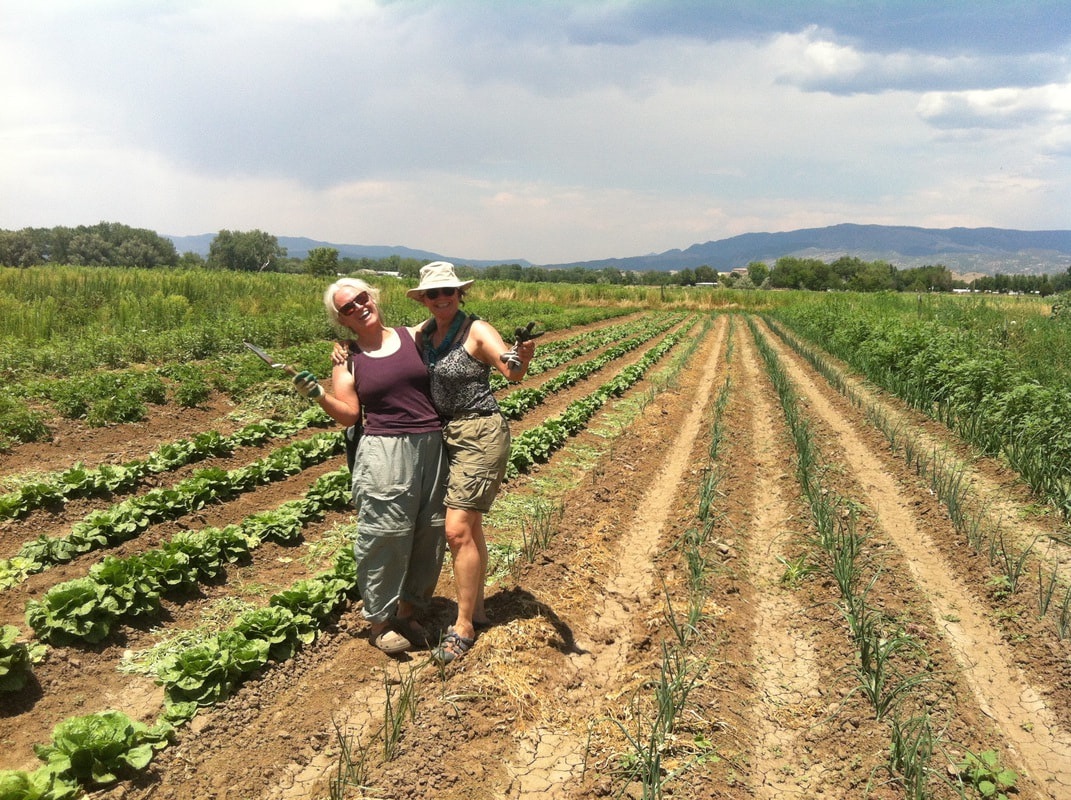
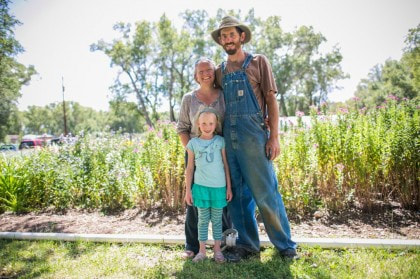
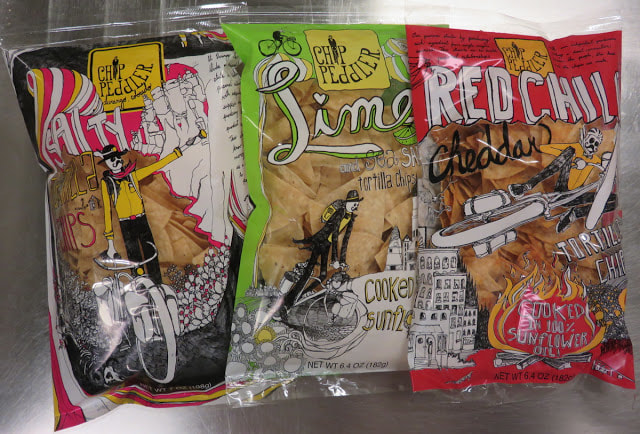
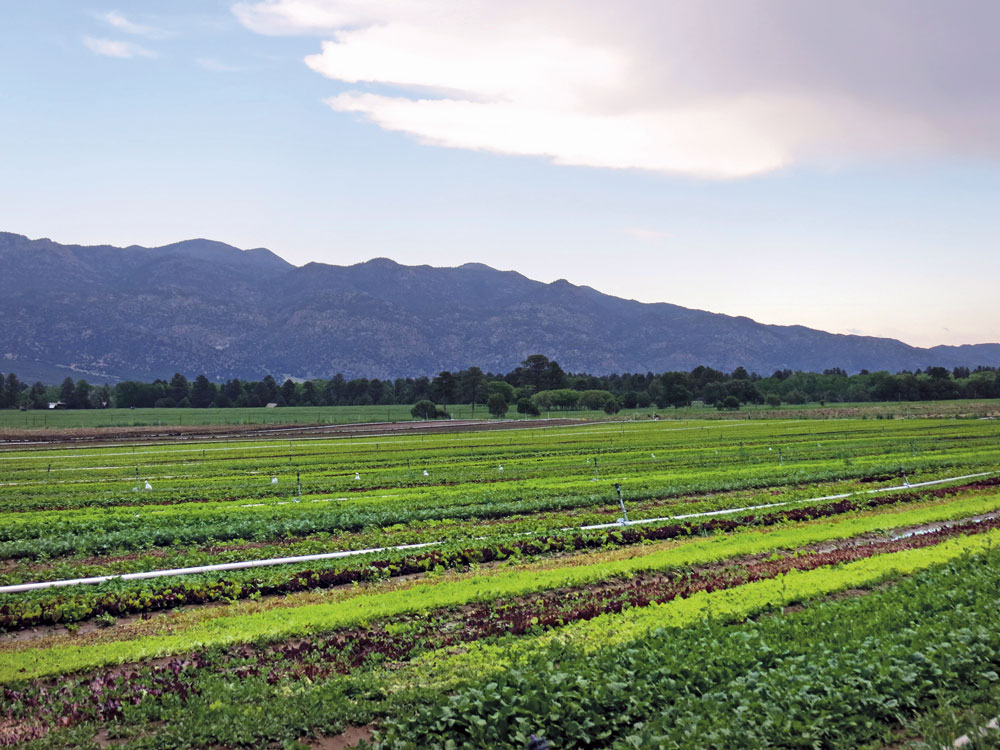
 RSS Feed
RSS Feed

